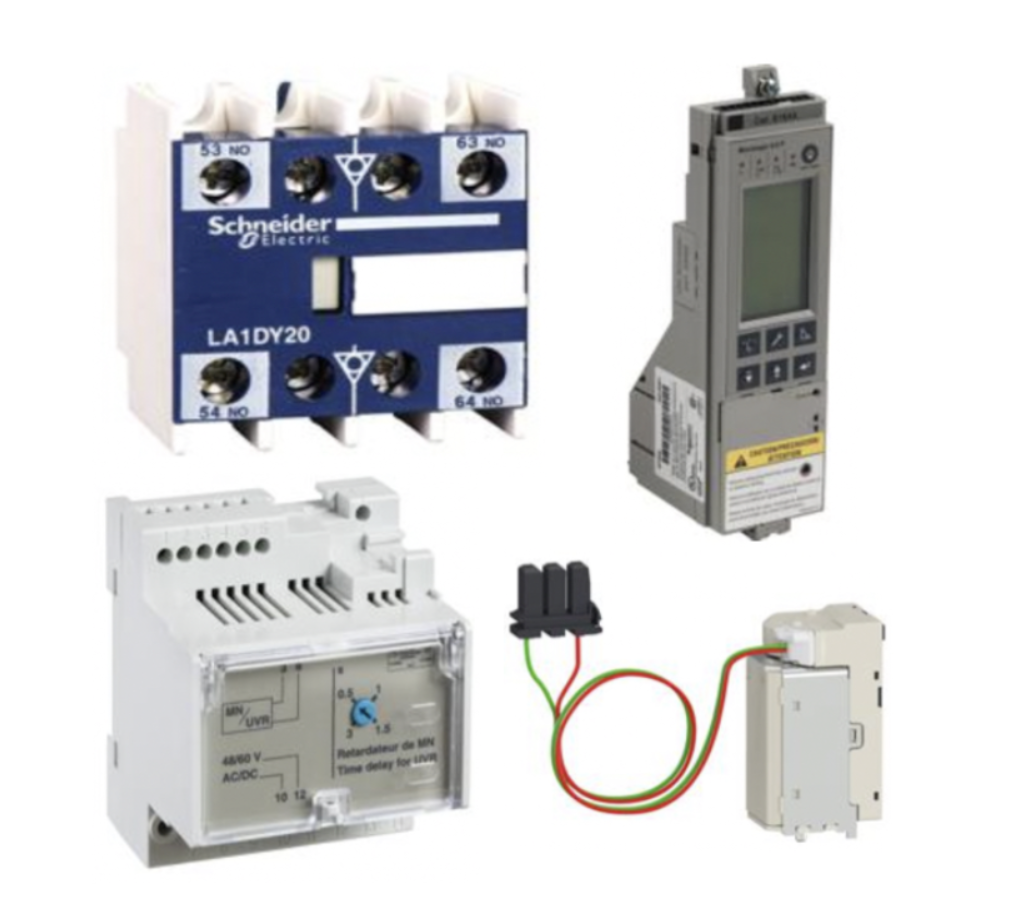Circuit Breaker Bases & Accessories

Circuit breaker bases and accessories are essential components used to mount, support, and enhance circuit breakers in industrial, commercial, and utility power distribution systems. Breaker bases provide the mechanical structure and electrical interface required to securely install breakers into panels, enclosures, switchgear, and motor control assemblies. Accessories expand breaker functionality by enabling control, monitoring, protection, and remote operation features.
Breaker bases simplify installation by providing standardized or adjustable mounting points that eliminate the need for custom panel fabrication or costly equipment modifications. They help ensure proper alignment, reliable electrical connections, and safe integration into panelboards, switchgear lineups, motor control centers, and OEM-built equipment. These bases are especially valuable in applications where system reliability and serviceability are critical.
Circuit breaker accessories include auxiliary and alarm contacts, shunt trip and undervoltage release devices, motor operators, mechanical interlocks, padlocking hardware, and control interfaces. These add-on components allow breakers to provide status indication, remote tripping, fail-safe operation, and restricted access when required. Properly selected bases and accessories improve safety, support compliance with electrical codes and standards, and allow power systems to be customized for specific operational and emergency shutdown requirements.
FAQs
Q: What are circuit breaker bases used for?
Circuit breaker bases are used to securely mount and electrically connect circuit breakers within panels, switchgear, and electrical enclosures, ensuring proper alignment, support, and safe operation.
Q: What types of accessories are available for circuit breakers?
Common accessories include auxiliary and alarm contacts, shunt trip devices, undervoltage releases, motor operators, handle extensions, locking mechanisms, mechanical interlocks, and communication or monitoring modules.
Q: Why are circuit breaker accessories important?
Accessories enhance breaker functionality by enabling remote control, system monitoring, alarm indication, and added safety features. They are often required to meet code, safety, or automation requirements.
Q: How do I choose the correct breaker base or accessory?
Selection depends on the specific breaker model and frame size, voltage and current ratings, mounting configuration, and required functions such as remote tripping or status feedback. Compatibility with the breaker is critical.
Q: Are circuit breaker bases and accessories used in industrial applications?
Yes, they are widely used in industrial facilities, commercial buildings, utilities, and OEM equipment where reliable power distribution, safety compliance, and system control are essential.
Why Buy Circuit Breaker Bases & Accessories from RSP Supply
RSP Supply offers a broad selection of circuit breaker bases and accessories from trusted manufacturers, including ABB, Benshaw, Eaton, IDEC, Killark, Phoenix Contact, Schneider Electric, and Square D. Our inventory supports a wide range of breaker styles and power distribution applications, helping customers configure safe, reliable, and code-compliant electrical systems. Customers rely on RSP Supply for knowledgeable product support, dependable sourcing, and industrial-grade power distribution components.

